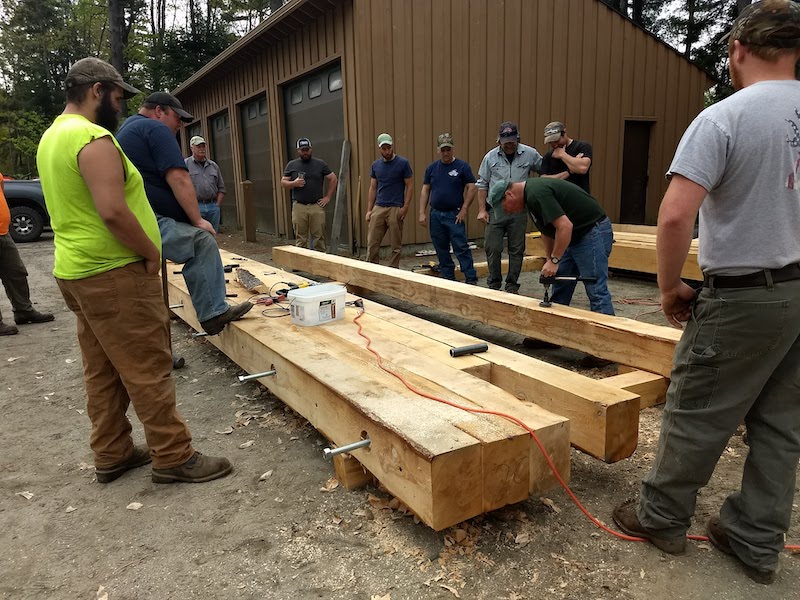
Last week, we won the jackpot. Well, more specifically, our conservation forester, Kathleen Stutzman, did. The prize? A 12,000-pound portable logging bridge. Kathleen offered her weighty prize to Vermont Family Forests, and we, in turn, gave it to local forest conservation contractor, Matt Atkins, who will use it for his log forwarding projects in local forests.
To understand how this weighty prize came our way, you need to look back to last May, when Kathleen attended a workshop for foresters and loggers, hosted by the Vermont Department of Forests Parks and Recreation (FPR). The workshop, which took place at Green Mountain Technical and Career Center in Hardwick, explored Vermont’s Acceptable Management Practices (AMPs) for maintaining water quality during logging operations.
Vermont is ribboned with small streams, and stream crossings are a critical potential entry point for forest soil sediments during logging. Vermont’s AMPs set a clear standard for crossing streams with logging equipment, stating that, “Stream crossings on skid trails shall be over bridge, culvert, or pole ford.” Of those three options, a well-placed bridge has by far the least impact on stream habitat and water quality.
Dave Wilcox, Watershed Forester for the State, and David Birdsall, who coordinates Vermont’s Logger Education to Advance Professionalism (LEAP) program, led the workshop. They strongly recommended the use of a portable bridge—constructed in three sections, each 4’ x 20’, laid side by side—to cross streams.

To get a hands-on sense of the straight-forward process of building a portable bridge, workshop participants spent part of the day building one 4’ x 20’ bridge panel of 6 x 6” and 6 x 8” hemlock beams. Students at the college later finished the other two bridge sections. Everyone who helped build it was entered into a raffle for the bridge.
Fast-forward to last week, when Kathleen learned that she was, in fact, the lucky winner. When he contacted her, Dave Wilcox noted that she was the first forester to win the bridge prize, and that he hoped she’d be able to put it to good use.
There’s no doubt about that! We’re thrilled to be given an excellent tool that will help local landowners maintain clean, clear, healthy forest streams. While such a bridge is typically called a skidding bridge, we call it a forwarding bridge, in keeping with our strong encouragement to landowners to move logs out of the forest with a forwarder, rather than a skidder.
A forwarder lifts logs onto a wheeled trailer, which both keeps the logs exceptionally clean and greatly reduces soil compaction and rutting, as well as damage to nearby trees (known as residual stand damage), which can occur when skidded logs scrape along the trunks of standing trees along the access path.
We’ve handed the forwarding bridge on to Matt Atkins to own and use in his own careful woods work. If you’re interested in talking with Matt about making use of the bridge and light-on-the-land forwarding in your own forest, you can reach him at 802-453-8423.
To learn more about how to use and construct a portable forwarding bridge, watch the excellent videoby the Vermont Department of Forests, Parks, and Recreation.
Detailed written instructions on bridge construction.






